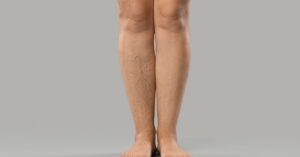Lymphedema is a chronic condition that can significantly impact an individual’s quality of life. Characterised by swelling, typically in the arms or legs, it occurs when the lymphatic system is unable to properly drain lymph fluid. While there is no cure for lymphedema, several treatments can help manage the symptoms and improve the quality of life for those affected. One innovative approach that has been gaining attention in the management of lymphedema is biofeedback therapy. In this article, we will explore the role of biofeedback in lymphedema management, how it works, its benefits, and how it can complement other treatment strategies.
What is Biofeedback?
Biofeedback is a technique that teaches individuals to control physiological processes in their body that are typically involuntary, such as heart rate, muscle tension, and skin temperature. Through real-time feedback provided by sensors attached to the body, individuals can learn how to regulate these functions and achieve a more balanced state. In the context of lymphedema management, biofeedback is used to help control the body’s responses to swelling, stress, and muscle tension.
How Biofeedback Works
Biofeedback therapy involves the use of sensors that monitor various physiological parameters. These sensors relay information to a computer or monitor, showing the individual how their body is responding to certain stimuli. The individual then learns how to control these responses through relaxation techniques, deep breathing, and other strategies. For example, if someone is experiencing increased muscle tension or swelling due to lymphedema, biofeedback can help them learn how to reduce this tension and, in some cases, encourage better fluid drainage.
The Science Behind Biofeedback
Biofeedback works on the principle that the mind can influence the body’s automatic functions. The feedback provided to the individual helps them become more aware of their physiological processes. Over time, with consistent practice, individuals can learn to regulate their responses to stress, pain, and swelling, leading to a more controlled and balanced state of health.
The Link Between Biofeedback and Lymphedema
Lymphedema results from a compromised lymphatic system, which causes a buildup of lymph fluid in the tissues. This fluid accumulation leads to swelling, heaviness, and discomfort, which can cause emotional and physical distress. One of the challenges of managing lymphedema is the difficulty in controlling swelling, especially during flare-ups. Biofeedback can help individuals with lymphedema manage their symptoms by teaching them to regulate their body’s physiological responses to swelling and pain.
Stress and Lymphedema: A Vicious Cycle
One of the factors that can exacerbate lymphedema is stress. Stress can lead to increased muscle tension, which in turn can worsen swelling and discomfort. Additionally, the frustration and anxiety associated with managing a chronic condition like lymphedema can contribute to further stress. Biofeedback helps break this cycle by enabling individuals to relax and reduce their stress levels, which can help alleviate muscle tension and reduce swelling.
Biofeedback and Lymphedema Symptoms
When it comes to managing lymphedema, biofeedback can help address several key symptoms, including:
- Swelling Reduction: Biofeedback can help individuals reduce muscle tension and improve blood and lymphatic circulation, leading to less fluid buildup and reduced swelling.
- Pain Management: By helping individuals manage their stress levels and muscle tension, biofeedback can also aid in pain relief, which is common among those with lymphedema.
- Improved Mobility: Reducing swelling and muscle stiffness can improve range of motion, making it easier for individuals to move and perform daily tasks.
- Emotional Well-being: Biofeedback provides relaxation techniques that help reduce anxiety and depression, common issues for individuals with chronic conditions like lymphedema.
Biofeedback Techniques Used in Lymphedema Management
Several different types of biofeedback techniques can be used to manage lymphedema symptoms. The most common types of biofeedback used in lymphedema management include:
Thermal Biofeedback
Thermal biofeedback measures skin temperature, which can be a reflection of blood flow and circulation. In lymphedema patients, poor circulation can contribute to swelling and discomfort. By using thermal biofeedback, individuals can learn to control blood flow to the affected area, helping to reduce swelling and improve lymphatic drainage.
Electromyography (EMG) Biofeedback
EMG biofeedback measures muscle tension by detecting electrical activity in the muscles. Lymphedema patients often experience tightness and discomfort in the muscles surrounding the swollen areas. EMG biofeedback can help individuals recognize and reduce this muscle tension, promoting relaxation and reducing swelling.
Heart Rate Variability (HRV) Biofeedback
Heart rate variability is a measure of the variation in time between heartbeats. This biofeedback technique focuses on regulating the autonomic nervous system, which controls involuntary bodily functions such as heart rate, digestion, and blood pressure. By learning to control their heart rate variability, lymphedema patients can reduce stress and promote overall relaxation, which can help manage swelling and pain.
Respiratory Biofeedback
Respiratory biofeedback focuses on controlling breathing patterns to reduce stress and anxiety. Since stress can exacerbate lymphedema symptoms, learning to control the breath can be an effective way to promote relaxation and reduce swelling.
The Benefits of Biofeedback in Lymphedema Management
Biofeedback has been shown to have numerous benefits for those managing lymphedema, including:
1. Non-invasive Treatment
Biofeedback is a non-invasive therapy, which means that it does not require surgery or medication. This makes it a safe option for many individuals with lymphedema, particularly those who prefer natural, drug-free treatments.
2. Personalized Approach
One of the advantages of biofeedback is that it is highly personalized. Each individual’s body responds differently, so biofeedback therapy allows patients to learn how to manage their unique symptoms effectively. This individualized approach can lead to better long-term results.
3. Long-term Benefits
Unlike some treatments that offer only temporary relief, biofeedback can provide long-term benefits. By learning how to control physiological responses, individuals can manage their lymphedema symptoms even when not in therapy, giving them more control over their condition.
4. Reduces the Need for Medication
Biofeedback can help reduce the reliance on medications, such as painkillers and anti-inflammatory drugs, which may have unwanted side effects. This makes biofeedback an appealing option for those looking to minimize their use of pharmaceuticals.
5. Stress Reduction
As mentioned earlier, stress can worsen lymphedema symptoms. By helping individuals learn how to relax and manage their stress, biofeedback can improve emotional well-being and contribute to better physical health.
Integrating Biofeedback with Other Lymphedema Treatments
Biofeedback can be used as part of a comprehensive lymphedema management plan. While it offers numerous benefits on its own, combining biofeedback with other treatments can lead to even better results. Some common treatments that can complement biofeedback include:
Manual Lymphatic Drainage (MLD)
MLD is a type of gentle massage designed to stimulate the lymphatic system and encourage the drainage of lymph fluid. When combined with biofeedback, MLD can help improve lymphatic circulation, reduce swelling, and relieve discomfort.
Compression Therapy
Compression garments, such as sleeves and stockings, can help control swelling by applying pressure to the affected area. Biofeedback can help individuals relax and reduce muscle tension, which can enhance the effectiveness of compression therapy.
Exercise and Physical Therapy
Exercise and physical therapy can help improve circulation and promote lymphatic drainage. Biofeedback can help individuals reduce muscle tension, allowing for a more effective and comfortable exercise routine.
Safety Considerations for Biofeedback
While biofeedback is generally safe, there are a few considerations to keep in mind. It is important to work with a trained and certified biofeedback therapist who understands the specific needs of individuals with lymphedema. Additionally, individuals should consult with their healthcare provider before beginning any new treatment, including biofeedback.
Conclusion
Biofeedback offers a promising and innovative approach to managing lymphedema. By teaching individuals how to control their body’s physiological responses, biofeedback can help reduce swelling, alleviate pain, and improve overall well-being. When combined with other treatments, such as manual lymphatic drainage, compression therapy, and exercise, biofeedback can be a powerful tool in the management of lymphedema. As always, it is important to consult with a healthcare provider before starting any new treatment to ensure it is safe and appropriate for your specific condition.
FAQs
Q1: Is biofeedback a cure for lymphedema?
- No, biofeedback is not a cure for lymphedema, but it can help manage symptoms and improve the quality of life for individuals with the condition.
Q2: How long does it take to see results from biofeedback therapy?
- Results from biofeedback therapy can vary depending on the individual. Some people may experience relief after a few sessions, while others may require more time to see significant improvements.
Q3: Can biofeedback be used alongside other lymphedema treatments?
- Yes, biofeedback can be effectively integrated with other lymphedema treatments, such as manual lymphatic drainage, compression therapy, and exercise.
Q4: Is biofeedback therapy safe for everyone with lymphedema?
- Biofeedback is generally safe, but it is important to consult with a healthcare provider before beginning therapy to ensure it is suitable for your specific needs.
Q5: Do I need to see a specialist for biofeedback therapy?
- Yes, biofeedback therapy should be performed by a trained and certified biofeedback therapist to ensure the best results and safety.





